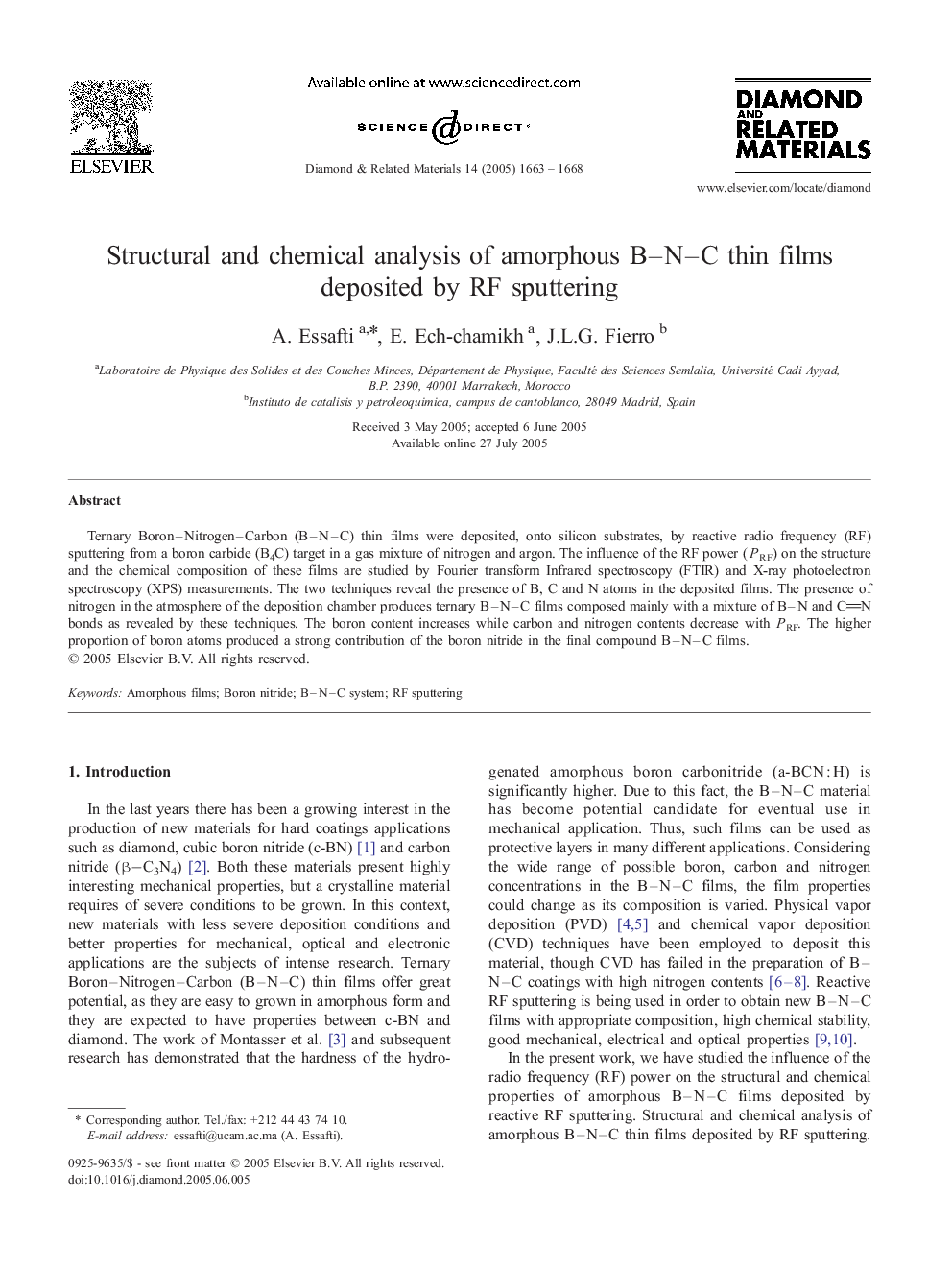| Article ID | Journal | Published Year | Pages | File Type |
|---|---|---|---|---|
| 10400985 | Diamond and Related Materials | 2005 | 6 Pages |
Abstract
Ternary Boron-Nitrogen-Carbon (B-N-C) thin films were deposited, onto silicon substrates, by reactive radio frequency (RF) sputtering from a boron carbide (B4C) target in a gas mixture of nitrogen and argon. The influence of the RF power (PRF) on the structure and the chemical composition of these films are studied by Fourier transform Infrared spectroscopy (FTIR) and X-ray photoelectron spectroscopy (XPS) measurements. The two techniques reveal the presence of B, C and N atoms in the deposited films. The presence of nitrogen in the atmosphere of the deposition chamber produces ternary B-N-C films composed mainly with a mixture of B-N and CN bonds as revealed by these techniques. The boron content increases while carbon and nitrogen contents decrease with PRF. The higher proportion of boron atoms produced a strong contribution of the boron nitride in the final compound B-N-C films.
Related Topics
Physical Sciences and Engineering
Engineering
Electrical and Electronic Engineering
Authors
A. Essafti, E. Ech-chamikh, J.L.G. Fierro,
